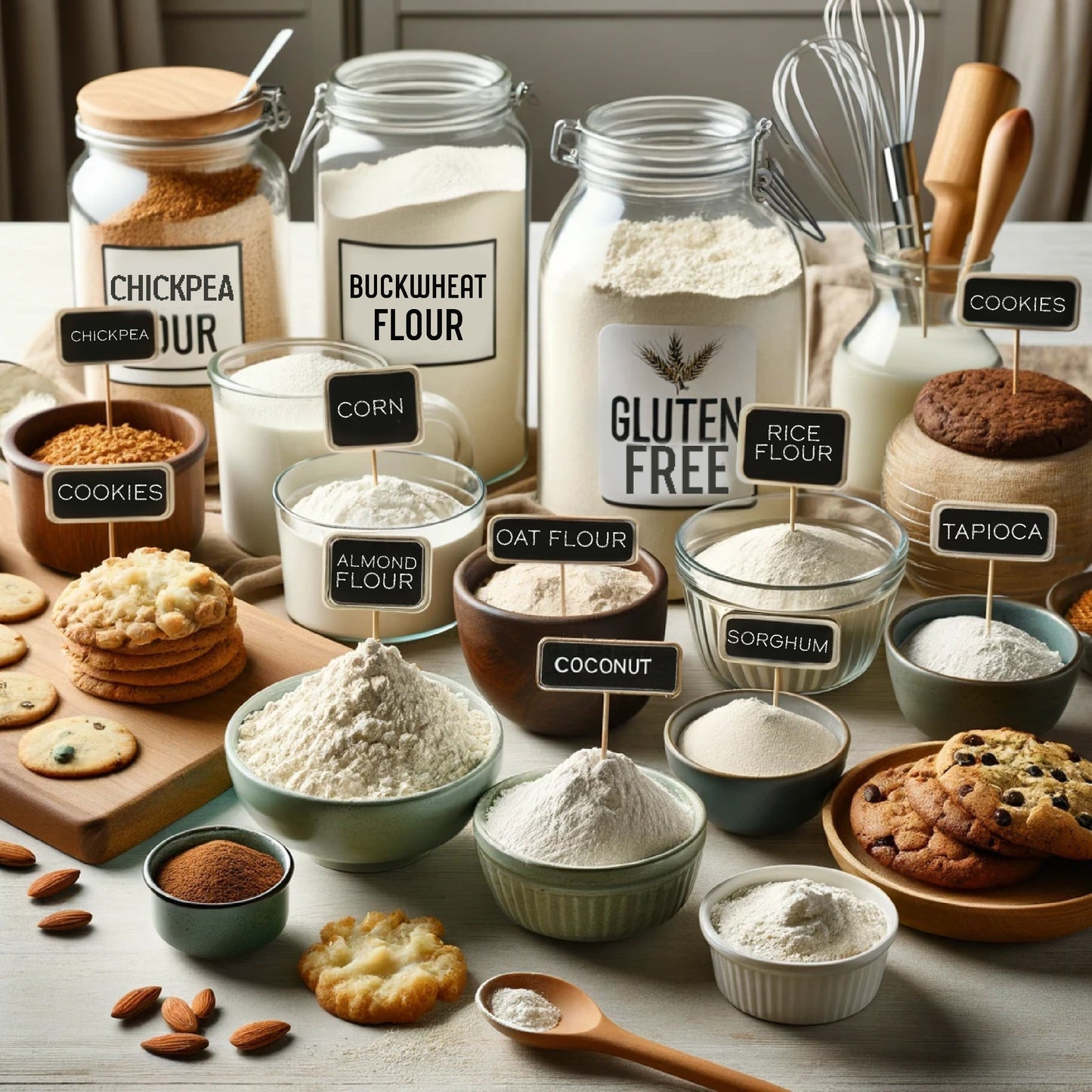reliable food sales
GLUTEN FREE
GLUTEN FREE
Couldn't load pickup availability
Gluten-free flours are a diverse group of flours made from grains, seeds, nuts, and other plant sources that do not contain gluten. These flours are essential for people with celiac disease, gluten intolerance, or those following a gluten-free diet. Known for their versatility and unique flavors, gluten-free flours provide excellent alternatives to traditional wheat flour in a variety of culinary applications.
What are Gluten-Free Flours? Gluten-free flours are milled from a wide range of gluten-free ingredients, each offering distinct textures, flavors, and nutritional benefits. They can be used individually or blended to achieve the desired consistency and taste in baking and cooking.
Types of Gluten-Free Flours:
- Almond Flour: Made from finely ground almonds, almond flour is rich in protein, healthy fats, and has a slightly sweet, nutty flavor. It is excellent for baking cakes, cookies, and bread.
- Coconut Flour: Derived from dried coconut meat, coconut flour is high in fiber and has a mild coconut flavor. It is highly absorbent and often used in combination with other flours.
- Rice Flour: Made from finely milled white or brown rice, rice flour has a neutral flavor and is commonly used in baking, sauces, and as a thickening agent.
- Oat Flour: Ground from whole oats, oat flour adds a mild, slightly sweet flavor and is high in fiber and protein. Ensure oats are certified gluten-free to avoid cross-contamination.
- Tapioca Flour: Extracted from the cassava root, tapioca flour is a starchy, slightly sweet flour used to add chewiness to baked goods and thicken sauces and soups.
- Chickpea Flour (Garbanzo Bean Flour): Made from ground chickpeas, this flour is high in protein and fiber, with a slightly nutty taste. It is ideal for savory dishes, bread, and fritters.
- Sorghum Flour: Sorghum flour has a mild, sweet flavor and is high in protein and fiber. It is often used in combination with other gluten-free flours in baking.
- Buckwheat Flour: Despite its name, buckwheat is gluten-free. This flour has a rich, earthy flavor and is high in nutrients, making it perfect for pancakes, waffles, and breads.
- Corn Flour: Made from finely ground corn, this flour is used in baking, tortillas, and as a thickener. It has a slightly sweet, corn flavor.
Uses in Culinary Applications:
- Baking: Gluten-free flours are used to make a variety of baked goods, including bread, cakes, cookies, muffins, and pastries. They can be used alone or blended to achieve the desired texture and flavor.
- Cooking: These flours are used as thickeners for sauces, soups, and gravies, providing a gluten-free alternative to wheat flour.
- Pancakes and Waffles: Many gluten-free flours work well in breakfast recipes, adding unique flavors and textures to pancakes, waffles, and crepes.
- Pasta and Noodles: Some gluten-free flours, like chickpea and rice flour, are used to make gluten-free pasta and noodles, providing a satisfying texture and taste.
Advantages of Gluten-Free Flours:
- Nutritional Benefits: Many gluten-free flours are rich in protein, fiber, and essential nutrients, offering health benefits beyond being gluten-free.
- Diverse Flavors: Each gluten-free flour has its own unique flavor profile, allowing for creative and flavorful culinary creations.
- Versatility: Gluten-free flours can be used in a wide range of recipes, from baking to cooking, providing flexibility for gluten-free diets.
How to Use:
- Baking: Use gluten-free flour blends or combine individual flours to achieve the desired texture and flavor in baked goods. Gluten-free recipes often require additional binding agents like xanthan gum or guar gum.
- Thickening: Substitute gluten-free flours for wheat flour as thickeners in sauces, soups, and gravies. Adjust the quantity as needed to achieve the desired consistency.
- Cooking: Incorporate gluten-free flours into batters for frying, breading, or making savory dishes like pancakes and fritters.
Storage: Store gluten-free flours in a cool, dry place in an airtight container to maintain freshness and prevent contamination. Some flours, like almond and coconut flour, are best kept in the refrigerator or freezer due to their high oil content.
Gluten-free flours offer a wide array of flavors, textures, and nutritional benefits, making them a versatile and essential ingredient for anyone following a gluten-free diet. Their adaptability in various culinary applications ensures that gluten-free cooking and baking can be both delicious and nutritious.
Share



